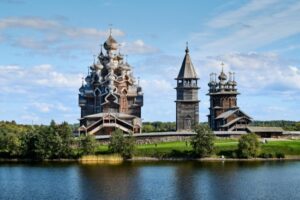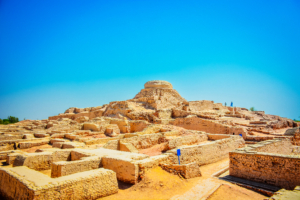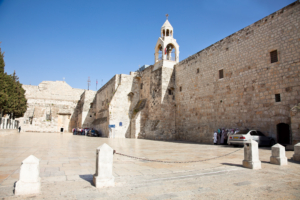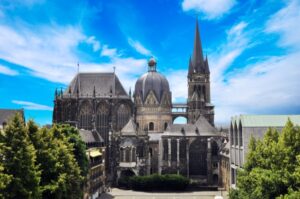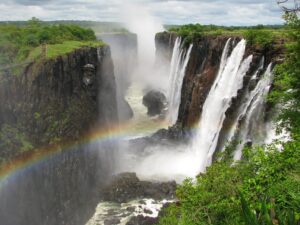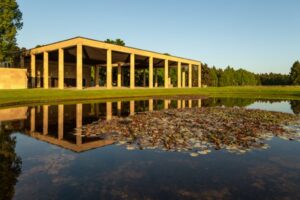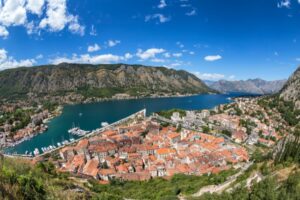| Registration Classification | cultural heritage |
| Registration Criteria | (1),(4),(5) |
| Year of registration | 1990 |
A small island in Lake Onega in northwestern Russia. Kizhi Pogost means “pogost (enclosure) of Kizhi Island.” Two wooden churches built in the 18th century and a 19th century clock tower remain on the island.The construction of these structures, which used absolutely no metal other than iron, had a great influence on the subsequent Russian architectural style.
Here, a World Heritage enthusiast explains why Kizii Pogosto is a World Heritage Site in an easy-to-understand manner. Read this and you will definitely learn more about Kizii Pogosto!
What is Kizi Pogosto? Registered wooden church located on Pheasant Island
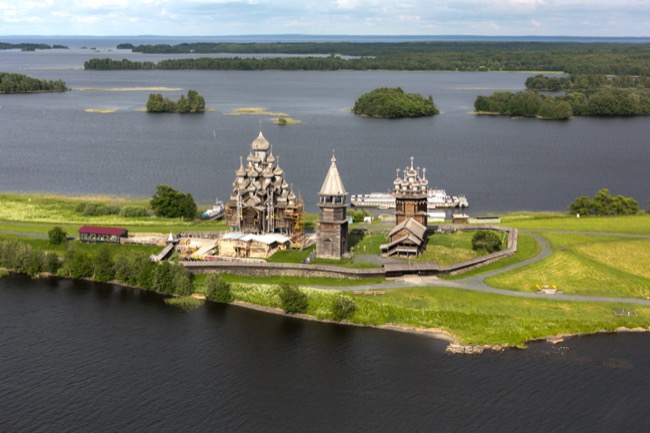
Pheasant Island is a small island in the Republic of Karelia, one of the countries that make up the Russian Federation.Floating in Lake Onega, the island is long and narrow, approximately 7 km long and 500 m wide. It is said that there was a settlement and a church on the island in the 16th century, but it was struck by lightning in the 17th century and burned down.However, in the 17th century, it was struck by lightning and burned down; it was rebuilt in the 18th century, and the two churches that remain today are from this period.
The two churches are built with very high architectural techniques, with multiple domes. And surprisingly, the churches were built without nails, using only axes, and are 37 meters high. These structures are masterpieces of Russian wooden architecture, and their blending into the lake landscape creates a unique atmosphere.
Registered Components
Preobrazhenskaya Church
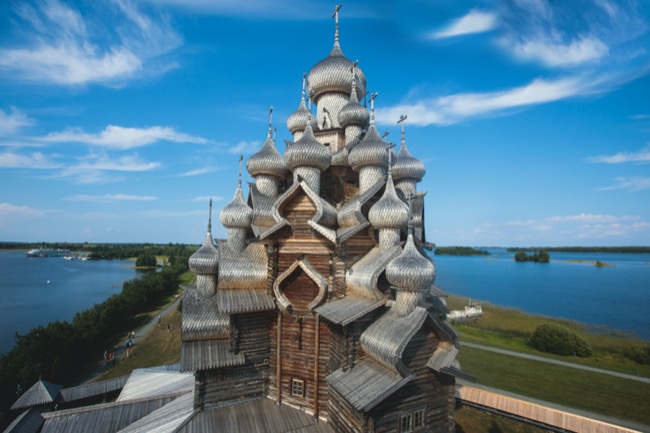


Measured from the materials, the cathedral was built in 1713-1714 and was used only for short periods of time in the summer.At 37 meters high, it is the tallest of the three buildings in line.The structure of the building is cruciform.The cupola, or onion-shaped roof, is arranged in 22 places, and its balance is the work of a master craftsman.Inside, there is an iconostasis (the wall between the sanctuary and the sanctuary of the Holy of Holies in Eastern churches) with 102 icon paintings dating from the 17th and 18th centuries.
Pokrovskaya Church
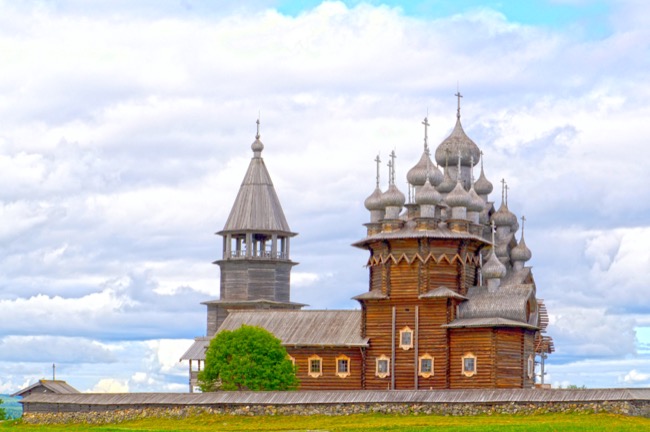


Built in 1764.T his is a lovely cathedral with eight cupolas.The highest part is 27 meters high, and the cupolas are arranged around the central cupola.The octagonal tent-shaped roof is a type commonly seen in Russian wooden architecture.
Belfry
Built in 1874.It has an octagonal tent-shaped roof, just like the Cathedral of the Protection of the Living Goddess of Mercy. If you look closely, you can see one cupola installed on the roof, which is unique.
For what reason is Kizie Pogosto on the World Heritage List?
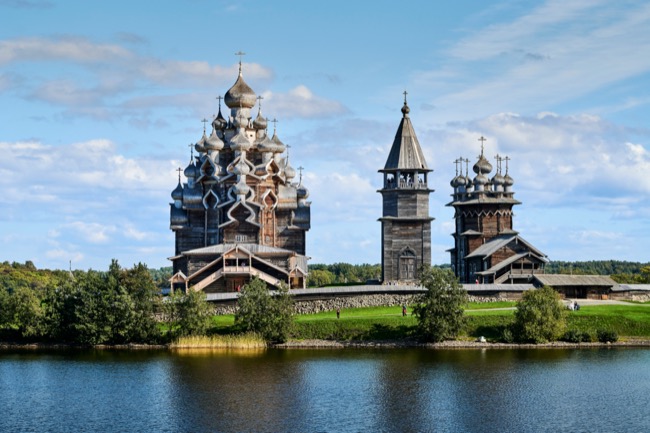


Kizzy Pogosto was recognized for
Registration Criteria (i)
The two churches and the bell tower are perfect wooden structures, in that they are in harmony with the surrounding landscape.
Registration Criteria (iv)
That Kizhi Island is a particularly fine example of a group of buildings in a sparsely populated settlement in northwestern Russia.
Registration Criteria (v)
It is an outstanding wooden structure in the traditional architecture of northwestern Russia, Finland, and Scandinavia.
World Heritage Mania Conclusions and Impressions
The view of the bell tower lined up between two churches on the island is very impressive and matches the surrounding landscape beautifully. The skill of the craftsmen who built such artistic structures with little or no iron, especially in spite of the extremely cold climate and small population around Kizii Island, can only be described as masterful craftsmanship!
Incidentally, Lake Onega, where Kizii Island is located, is the second largest freshwater lake in Europe; at 9,894 square kilometers, it is a large lake and difficult to get around. However, in winter, the entire lake is iced over, making it possible to cross to the other side of the lake on foot, which is a curious situation, as the range of travel is greater in winter than in summer. Of course, please note that sightseeing is mainly in summer.
*The contents here are considerations derived from research conducted by World Heritage enthusiasts.As for the data, interpretation differs depending on the media.
